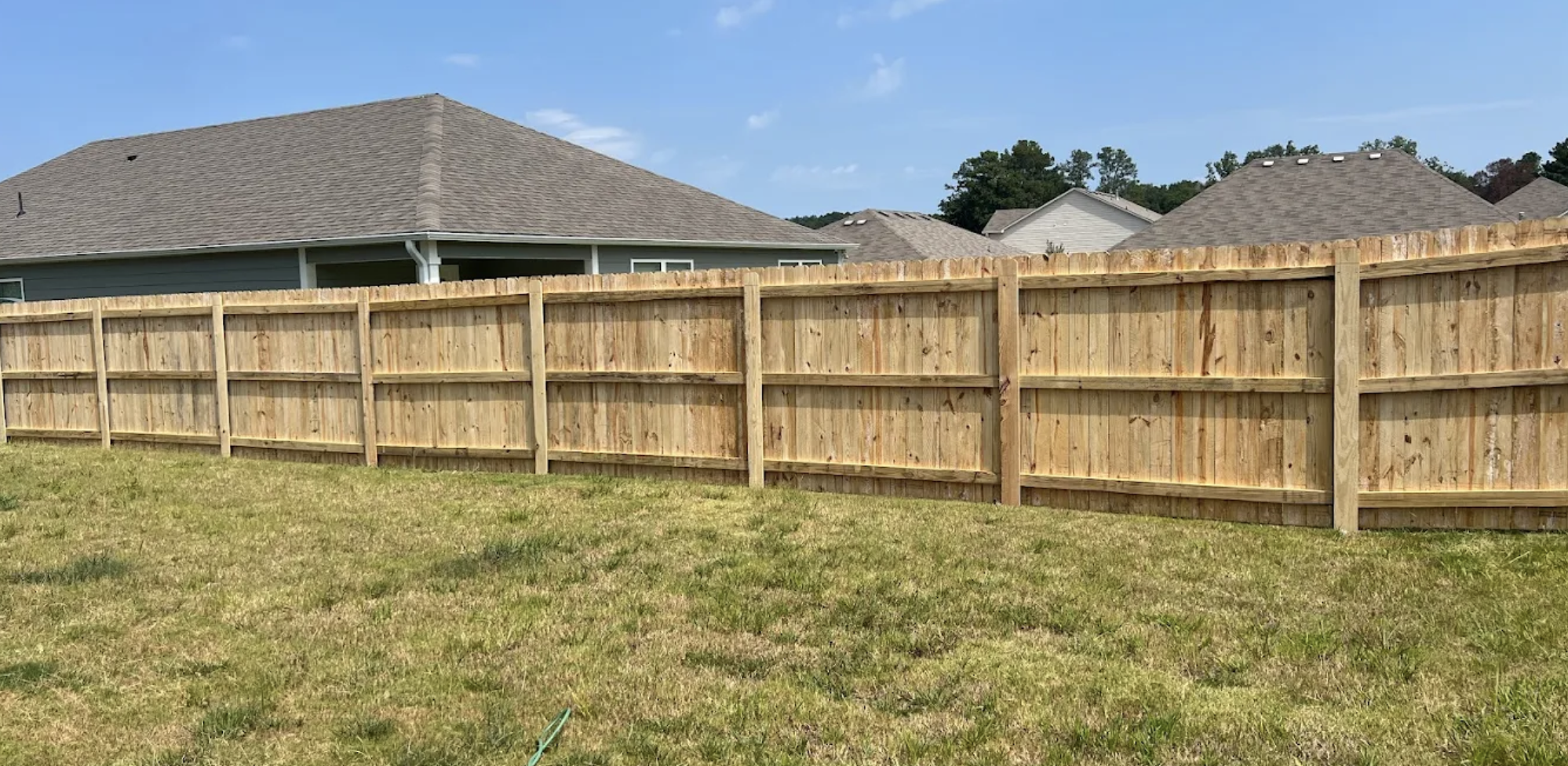Thinking about adding a wood privacy fence to your home in the Birmingham, AL area? It’s a great way to boost curb appeal and give you that much-needed private oasis in your backyard. But before you grab your tools, it’s important to understand the price of a wood privacy fence, especially when it comes to those charming 6-foot-high barriers made from pressure-treated pine. Typically, homeowners can expect the cost of a privacy fence to range between $30 and $40 per linear foot, which includes both materials and installation. So, whether you’re dreaming of a quiet retreat or aiming to keep your pets safe, knowing the ins and outs of the costs involved can make your decision easier and more budget-friendly.
So let’s say you want a wood privacy fence that goes around your entire backyard and you measure it at 200 linear feet. You should expect to invest $6,000-$8,000.
Understanding Wood Privacy Fence Costs
When planning to install a wood privacy fence, it’s crucial to grasp the various elements that influence its cost. Let’s break down the key factors, what’s typically included in the price, and how to budget effectively for your new fence.
Factors Affecting the Cost
The price of a wood privacy fence can vary based on several factors. The type of wood you choose plays a big role in the overall cost. Pressure-treated pine is a popular and cost-effective option, while cedar or redwood can be pricier but offer natural resistance to decay.
The height of your fence also impacts the price. A standard 6-foot fence is common, but taller fences will naturally cost more due to additional materials and labor.
Your property’s terrain can affect installation costs. A flat, easily accessible yard will be less expensive to fence than a sloped or rocky area that requires extra work.
Lastly, the length of your fence is a major factor. Remember, fencing companies typically charge by the linear foot, so the longer your fence, the higher the total cost.
What’s Included in the Price
When you get a quote for a wood privacy fence, it’s important to know what’s covered. Most reputable fencing companies include several key components in their pricing.
Materials are the biggest part of the cost. This includes the wood for posts, rails, and pickets, as well as concrete for setting the posts and hardware for assembly.
Labor is another significant portion of the price. This covers the work of digging post holes, setting posts, attaching rails and pickets, and ensuring the fence is level and secure.
Many companies also include basic site preparation in their quote. This might involve clearing small obstacles or minimal grading, but extensive landscaping work is usually an extra charge.
Permits, if required by your local municipality, are sometimes included in the fence company’s price. Always check if this is the case or if you need to handle permitting separately.
Budgeting for Your Fence
Planning your budget for a wood privacy fence involves more than just the base price per linear foot. Start by measuring the perimeter of your property to get an accurate idea of how many linear feet of fencing you’ll need.
Consider any additional features you might want, such as gates, decorative post caps, or staining. These can add to the overall cost but may be worth it for the enhanced look and functionality.
It’s wise to get quotes from multiple fencing companies. This not only helps you find the best price but also allows you to compare what different contractors include in their services.
Don’t forget to factor in long-term maintenance costs. While wood fences are generally affordable upfront, they may require periodic staining or sealing to maintain their appearance and durability.
Lastly, consider setting aside a contingency fund of about 10-15% of your total budget. This can cover unexpected costs that might arise during installation, such as dealing with unforeseen ground conditions or needing extra materials.

